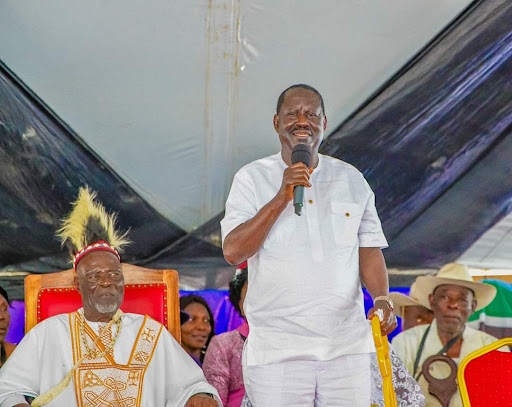Kenyan health authorities have activated polio surveillance after Burundi reported an outbreak of eight confirmed cases so far.
This was the first such outbreak in the east African country in more than 30 years.
Health authorities in Kenya said they are carrying out increased environmental surveillance, where wastewater is tested for the poliovirus.
The tests are being done at the Kenya Medical Research Institute laboratories, a disease surveillance official told the Star.
They are also watching out for acute flaccid paralysis, the weakness or paralysis of the limbs in children, which is indicative of polio.
According to the World Health Organization, the Burundi cases were confirmed on Friday in a four-year-old child in western Burundi who had not received any polio vaccination, as well as in two other children who were contacts of the four-year-old boy.
Additionally, five samples from environmental surveillance of wastewater confirmed the presence of the circulating poliovirus type 2.
“The detection of the circulating poliovirus type 2 shows the effectiveness of the country’s disease surveillance. Polio is highly infectious and timely action is critical in protecting children through effective vaccination,” Dr Matshidiso Moeti, WHO regional director for Africa, said.
“We are supporting the national efforts to ramp up polio vaccination to ensure that no child is missed and faces no risk of polio’s debilitating impact.”
The Burundian government — which has declared the detection of the virus a national public health emergency — plans to implement a vaccination campaign in the coming weeks, targeting children up to seven years, WHO said.
Circulating poliovirus type 2 is the most prevalent form of polio in Africa and outbreaks of this type of poliovirus are the highest reported in the region, with more than 400 cases reported in 14 countries in 2022, WHO said.
Circulating poliovirus type 2 infection can occur when the weakened strain of the virus contained in the oral polio vaccine circulates among under-immunised populations for long periods.
Acute flaccid paralysis is defined by the acute onset of weakness or paralysis with reduced muscle tone in children. There are many infectious and non-infectious causes of acute flaccid paralysis. Polio is one cause of acute flaccid paralysis. Its early detection is critical in containing a potential outbreak.
Kenya lastly reported cases of type 2 polio in January 2021 and December 2020.
Six cases of mutated polio virus were detected in Kenya during that time.
If even one child tests positive for polio, 200,000 other children are considered by the WHO to be at risk of contracting the virus
Three cases were newly arrived children from Somalia at the Dadaab refugee camp. Their stool was tested and found to have the mutated poliovirus.
A mutated virus was also found in a separate sewage sample from Garissa, while two samples of sewage collected in Mombasa were found to have a similar virus.
The WHO noted they were all circulating vaccine-derived polioviruses type 2, which is common in under-vaccinated communities in Somalia.
The solution is widespread vaccination to break any possible transmission.
“If even one child tests positive for polio, 200,000 other children are considered by the WHO to be at risk of contracting the virus,” former Health CS Mutahi Kagwe said in 2021.
Kenya responded with a mass polio vaccination drive that reached more than 3.4 million children in 13 counties.
Head of surveillance and epidemic response at the ministry, Dr Emmanuel Okunga, at that time, said the Somali cases were detected because of Kenya’s efficient surveillance system.
“We test children coming into Kenya, they are healthy children but we take their stool samples and test for polioviruses so in this case we detected poliovirus in three children who came from Somalia and they had come to Garissa,” he said.
The WHO certified Africa free of the wild polio virus on August 25, 2020.
(Edited by V. Graham)











